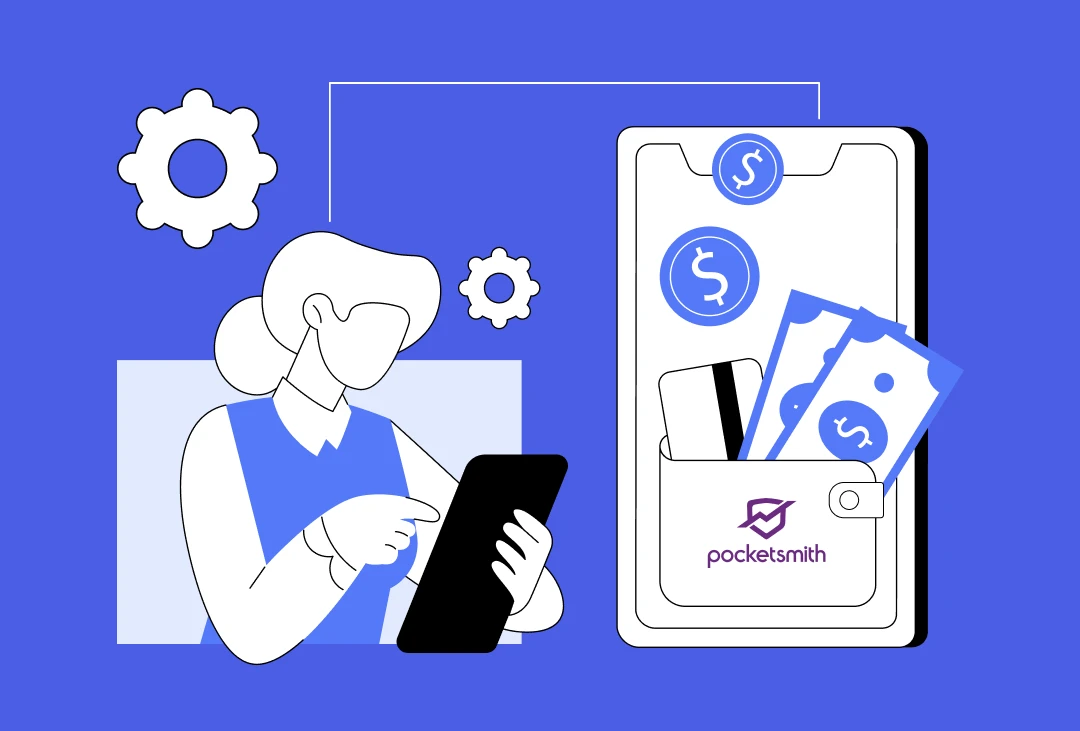- Understanding White-Label Tax Compliance Software
- Comprehending the White-Label Tax Compliance Software Development Cost
- Cost Analysis Based on App Complexity
- Cost Analysis Based on Multiple Phases of App Development
- Factors Affecting the Cost to Develop a White-Label Tax Compliance Software
- Complexity of Tax Rules
- Customization Level
- Integration with Existing Systems
- Number and Type of Users
- Compliance and Security Features
- Maintenance and Support
- Features to Develop a Robust White-Label Tax Compliance Software
- Basic Tax Compliance Software Features
- Advanced Tax Compliance Software Features
- Hidden Costs That Impact the Cost to Develop a White-Label Tax Compliance Software
- Compliance and Regulatory Updates
- Scalability Improvements
- Security Enhancements
- Integration with New Technologies
- Strategies to Minimize the Cost of Developing a White-Label Tax Compliance Software
- Prioritize Core Features
- Use Open Source Tools
- Automate Testing
- Adopt Agile Methodologies
- Plan for Scalability Early
- Regular Cost Reviews
- Step-by-Step Process to Develop a White-Label Tax Compliance Software
- Requirement Gathering
- Design and Prototyping
- Development
- Testing and Quality Assurance
- Deployment and Going Live
- Maintenance and Updates
- Challenges in White-Label Tax Compliance Software Development
- Trends in Automated White-Label Tax Compliance Software Development
- Increased Use of AI and Machine Learning
- Cloud-Based Solutions
- Emphasis on Data Security
- Regulatory Technology (RegTech)
- Blockchain for Transparency and Security
- Integration with Other Financial Tools
- Why Appinventiv is the Best Tech Partner for Developing White-Label Tax Compliance Software
- FAQs
Tax compliance can be a real headache for businesses. Keeping up with all the changing rules and regulations is no small task, and that’s where white-label tax compliance software comes in. It’s a handy tool for businesses that want a straightforward way to handle taxes without getting tangled in the complex web of tax laws.
Think about it: if you could offer a tax software solution that carries your brand and takes care of all the tax details, wouldn’t that be a big relief for your clients? This is exactly what a white-label solution does. It lets businesses sell the software under their name, adding value to their services and easing their clients’ tax burdens.
Now might be the perfect time to jump on board with this. More and more businesses are looking for digital solutions to streamline operations, especially regarding the financial side. A white-label tax compliance tool simplifies tax management and grows with your company, adapting to various needs.
If you have decided to dive into this space, one of the most critical aspects to consider is the white-label tax compliance software development cost.
To give you a brief idea, the development budget can vary widely from $50,000 to $250,000. This range depends on several factors, including the complexity of the tax rules you must cover, the software’s scalability, and any custom features you want to include.
This blog will help you uncover all the details you need to know to make a well-informed decision about this investment. So, let’s dive right into the details.
Let’s team up to craft software that practically sells itself—boosting your brand and stacking your revenue like a boss.
Understanding White-Label Tax Compliance Software
White-label tax compliance software is a pre-built solution that businesses can purchase, brand with their own identity, and use as if they had developed it themselves. This software manages various tax-related tasks like calculating taxes due, filing tax returns, and maintaining compliance with local, state, and federal regulations. By getting a white-label product built by a dedicated team, companies like yours can provide these services under your brand without building a system from scratch.
This software is ideal for companies looking to enhance their service offerings. It’s built to be adaptable, allowing customization to fit specific client needs and industry requirements. This flexibility makes it a valuable addition for firms aiming to support other businesses in managing their tax processes efficiently.
Investing in white-label tax compliance software development for businesses like yours also means staying up-to-date with the latest tax legislation and technology changes. Providers of these solutions continuously update the software, ensuring it is reliable and equipped with the latest features. This commitment helps maintain a firm’s reputation as a trusted provider, minimizing compliance risks for its clients who depend on the software to stay legally compliant.
The Tax Compliance Software Market is on a remarkable growth trajectory. From a valuation of $15,791.2 million in 2023, it’s projected to soar to $48,563.7 million by 2032, with an impressive compound annual growth rate (CAGR) of 12.9% during the forecast period from 2024 to 2032.
Increasing global business complexities fuel this surge, the need for efficient tax processing solutions due to constantly evolving tax regulations, and the growing acceptance of digital solutions to enhance accuracy and reduce human error in tax reporting.
As businesses increasingly recognize the necessity of robust tax compliance tools to navigate these challenges, the market continues to expand. If you are still considering the benefits of tax compliance software for your business, let us offer you a quick insight small business tax deductions.
| Strategic Benefit | Impact |
|---|---|
| Regulatory Compliance | Ensures businesses comply with ever-changing tax laws and regulations, reducing the risk of costly legal issues. |
| Operational Efficiency | Automates routine tasks, streamlines tax operations, and minimizes manual errors, saving time and operational costs. |
| Data Security | Provides advanced security features to protect sensitive financial data, which is critical in maintaining client trust and complying with data protection regulations. |
| Enhanced Reporting Capabilities | Offers comprehensive reporting tools that generate detailed reports for audits and insights, facilitating better business decisions. |
| Customer Satisfaction | Improves client satisfaction through accurate and timely tax processing, enhancing the overall customer service experience. |
Comprehending the White-Label Tax Compliance Software Development Cost
As mentioned, the cost to develop a white-label tax compliance software can range from $50,000 to $250,000. This broad range is influenced by various factors that can either increase or decrease the development cost. Understanding these factors is crucial for calculating the potential investment required for your software.
Quick Formula to Estimate the Cost of White-Label Tax Compliance Software:

Let’s delve into a detailed analysis that helps clarify the financial expectations for automated tax compliance software development.
Cost Analysis Based on App Complexity
The app’s complexity is a pivotal factor in determining its development cost. A basic version of tax compliance software might focus on core functionalities like managing tax calculations, filing, and compliance checks for a single jurisdiction. This simpler version requires fewer integrations and straightforward security measures.
A more advanced app might include features such as support for multiple tax jurisdictions, automated tax updates, and integration with other financial software, adding functionality and enhancing security.
An even more sophisticated version could incorporate high-end technologies like AI for predictive analytics, which can help forecast tax liabilities and planning, or blockchain for enhanced security and audit trails, significantly expanding the scope and impact of the software.
| Complexity Type | Cost Range | Expected Cost Range |
|---|---|---|
| Simple | Basic tax management and filing, single jurisdiction support | $50,000 – $100,000 |
| Moderate | Includes Simple features + Support for multiple jurisdictions, basic integrations | $100,000 – $175,000 |
| Highly Complex | Includes Moderate features + AI, blockchain, advanced security, comprehensive integration | $175,000 – $250,000+ |
Cost Analysis Based on Multiple Phases of App Development
Developing a white-label tax compliance software involves several key phases, each contributing significantly to the overall cost and success of the project. Initially, businesses must conduct thorough market research and engage in legal consultations during planning to ensure the product meets market and regulatory requirements.
The design phase then creates an intuitive and visually appealing user interface. The development phase is dedicated to building the software, integrating functionalities, and conducting thorough testing.
Post-development, the launch phase includes marketing efforts and the software’s release to the market. The final phase, maintenance, is essential for ensuring the software remains current with tax laws and operates seamlessly, supported by regular updates and technical support.
| Development Phase | Activities | Estimated Cost | Time and Effort |
|---|---|---|---|
| Planning | Market research, legal consultations | $10,000 – $20,000 | 1-2 months |
| Design | UI/UX design, feature customization | $20,000 – $50,000 | 2-4 months |
| Development | Coding, integration, testing | $80,000 – $150,000 | 4-6 months |
| Launch | Marketing, training, deployment | $10,000 – $30,000 | 1-2 months |
| Maintenance | Updates, technical support | $10,000 – $30,000/year | Ongoing, varies annually |
Factors Affecting the Cost to Develop a White-Label Tax Compliance Software
When considering white-label tax compliance software development, it’s important to understand the factors contributing to the total cost. Each factor shapes the final product’s complexity, functionality, and effectiveness.

Complexity of Tax Rules
The complexity of tax rules a software needs to manage greatly impacts the automated tax compliance software development costs directly. Software that handles complex, multi-jurisdictional tax regulations requires sophisticated algorithms and extensive testing to ensure accuracy and compliance. The more intricate the tax rules are, the higher the cost is due to the need for advanced features that can accurately process varied tax scenarios.
| Tax Regulation | Impact on Software |
|---|---|
| VAT/GST Rules | Complex calculations and multiple rates per product/service. |
| E-commerce Taxation | Specific rules for digital goods and cross-border sales. |
| Transfer Pricing Regulations | Regulations on transactions between company divisions in different countries. |
Customization Level
The degree of customization directly influences the development expenses. Tailoring software to meet specific business needs, such as custom workflows, unique user interfaces, and specialized reporting tools, requires additional design, development, and testing efforts.
Integration with Existing Systems
The level of necessary integration with existing business systems like ERP, accounting software, or CRM impacts the white-label tax compliance software development cost. Effective integration ensures seamless data flow and functionality but requires substantial development time to establish reliable connections.
Number and Type of Users
The scalability of the software to accommodate the number of users and the complexity of user roles can significantly affect automated tax compliance software development costs. Systems designed for many users or with role-based access controls require a robust architecture.
Compliance and Security Features
Adhering to stringent security measures and tax compliance standards is crucial and can considerably increase development costs. Implementing data security protocols and compliance features requires expertise and extensive testing. Let’s take a quick look at the key security and compliance requirements typically necessary for tax compliance software:
| Security/Compliance Requirement | Why Does It Matter? |
|---|---|
| Data Encryption | Protects sensitive information from unauthorized access. |
| Multi-Factor Authentication | Enhances security by verifying user identity through multiple credentials. |
| Regular Security Audits | Identifies vulnerabilities and ensures ongoing compliance with security standards. |
| GDPR Compliance | Mandatory for software used by businesses with EU customers to protect privacy. |
| PCI DSS Compliance | Essential for software that processes or stores payment information to prevent data theft. |
| Continuous Compliance Monitoring | Ensures the software remains up-to-date with current laws, avoiding legal penalties. |
Maintenance and Support
Ongoing maintenance and support are essential for the software’s longevity and relevance. Regular updates ensure the system remains compatible with new tax laws and technological advancements but add to the overall white-label tax compliance software development costs.
Features to Develop a Robust White-Label Tax Compliance Software
Creating effective white-label tax compliance software involves integrating both basic and advanced features. Incorporating these features during the automated tax compliance software development process collectively ensures the software is comprehensive, secure, and adaptable to varying business needs and regulatory environments.
Basic Tax Compliance Software Features

Automated Tax Calculations
Automatically calculates taxes based on up-to-date tax rates and rules, reducing human errors and increasing efficiency.
Reporting
Provides financial and tax reporting capabilities that allow businesses to generate necessary reports easily.
User Access Management
Manages different user roles and access levels within the software to secure sensitive data and streamline operations.
Document Management
Allows users to store, manage, and retrieve tax documents and receipts organizationally.
Notification System
Sends alerts and reminders for tax filing deadlines and other important events to keep users compliant.
Data Import/Export
Facilitates easy data transfer, allowing users to import data from various sources and export data for external use.
Advanced Tax Compliance Software Features

1. Multi-Jurisdictional Compliance
Supports tax calculation and compliance for multiple regions and countries, which is crucial for global businesses.
2. Real-Time Reporting
Enables real-time data processing, allowing for up-to-the-minute accuracy in financial reporting and decision-making.
3. Audit Trail
Logs all user activities and changes within the software, providing traceability and aiding in regulatory audits.
4. Integration Capabilities
Seamlessly integrates with other business systems like ERP, CRM, or accounting software, enhancing data consistency and operational efficiency.
5. AI-Powered Analytics
Integration of artificial intelligence during automated tax compliance software development paves the way for predictive analytics for tax planning and trend analysis, offering strategic insights to users.
6. Blockchain Security
Implement blockchain technology to enhance data integrity and security, which is especially useful in audit trails and secure document management.
7. Customizable Dashboards
Offers fully customizable dashboards that allow users to view the most relevant information tailored to their needs.
Hidden Costs That Impact the Cost to Develop a White-Label Tax Compliance Software
When planning the budget to develop a white-label tax compliance software, it’s crucial to consider the direct costs and hidden costs that can significantly affect the overall expense. These hidden white-label tax compliance software development may not be immediately apparent but can impact the project’s scope, timeline, and financial planning.

Compliance and Regulatory Updates
Keeping the software compliant requires regular updates to adapt to changing tax laws, which can be costly and require additional testing to meet regulatory standards. These updates ensure the software remains useful and legal but add to the maintenance budget.
Scalability Improvements
As businesses grow and more clients adopt the software, scalability improvements will likely be needed to handle increased loads and data volumes. Upgrading infrastructure and modifying the software to scale effectively can introduce significant additional costs.
Security Enhancements
Security is paramount, especially for software handling sensitive financial data. As cyber threats evolve, continuous investment in advanced security measures and regular security audits are required to maintain data integrity and trust, leading to hidden ongoing expenses.
Integration with New Technologies
Keeping the software compatible with new technologies and systems is a hidden cost often overlooked. Integration with advanced ERP systems or the latest financial technologies involves compatibility testing and potentially extensive API development, adding complexity and cost.
Strategies to Minimize the Cost of Developing a White-Label Tax Compliance Software
Tax and compliance software development efficiently requires strategic planning to manage costs without compromising quality. By adopting certain strategies from the outset, businesses can significantly reduce expenses and enhance the scalability and marketability of the product. Let’s outline the effective strategy to minimize the white-label tax compliance software development costs:
Prioritize Core Features
Focus on identifying and developing the essential features first to reduce initial costs significantly and speed up the market entry time, ensuring high savings.
Use Open Source Tools
Incorporate free and open-source software when suitable, which helps cut down on licensing fees and reduces the overall development time, offering moderate cost savings.
Automate Testing
Implement automated testing processes to enhance continuous integration and delivery, which improves efficiency, reduces bugs, and lowers long-term maintenance costs, providing substantial savings.
Adopt Agile Methodologies
Utilize agile development practices to quickly and efficiently adapt to changes, reducing wasted effort and more closely aligning the development process with business goals, thus achieving moderate savings.
Plan for Scalability Early
Design the software architecture to be scalable from the beginning to avoid costly redesigns and upgrades as user demand grows, resulting in moderate savings.
Regular Cost Reviews
Conduct frequent reviews of expenditures against the budget to ensure the project stays on budget and to identify potential overspends early, leading to moderate savings by avoiding financial surprises.
Let’s hook you up with killer features that’ll make your software the go-to choice in the game.
Step-by-Step Process to Develop a White-Label Tax Compliance Software
Developing a white-label tax compliance software involves a systematic approach to ensure that the final product is efficient, scalable, and ready to be rebranded by businesses. Following a clear, step-by-step process helps align the tax compliance technology development with business objectives, ensuring that all critical aspects are covered efficiently.

Requirement Gathering
Begin by collecting all the necessary details about what the software needs to do. This includes understanding the different tax rules it must handle and the features users want. Getting these details right from the start helps ensure the software meets real user needs and doesn’t waste time on unnecessary features.
Design and Prototyping
Once you know the requirements, start designing how the software looks and works. Create early versions or prototypes to show potential users and get their feedback. This early feedback can help make changes before the full development starts, saving time and reducing later fixes.
Development
Now, start building the software with the team. Use a flexible approach to make changes easily as you learn more from user feedback. Focus on creating a strong base that can handle growth and easily connect with other systems, which is important for white-label products.
Testing and Quality Assurance
Test the software thoroughly to ensure it works well and is error-free. Check how it integrates with other systems, and make sure it’s secure and follows all tax laws. This step is crucial to avoid problems when the software is live, ensuring users have a smooth experience.
Deployment and Going Live
During this tax compliance solution development phase, get everything ready for launch. Set up the servers, make sure all the data connections work, and prepare a plan for the launch to go smoothly. Also, guides and materials should be created to help users understand how to use the software from day one.
Maintenance and Updates
After the software is live, keep it updated with regular checks and improvements. Respond to user issues with a support team and update the software as tax laws change. Keeping the software current and running smoothly is key to keeping users happy and the product competitive.
After looking into the step-by-step process of tax compliance management system development, let us move ahead and take a good look at the challenges that can be incurred during the entire process.
Challenges in White-Label Tax Compliance Software Development
Developing white-label tax compliance software can pose various challenges that need strategic solutions to ensure the software is effective and meets market demands. Addressing these challenges properly is crucial for successfully deploying and operating the software. Let us look at them in detail below:
| Challenge | Why It’s a Challenge | Solution |
|---|---|---|
| Adapting to Various Tax Laws | Tax laws change often and vary by location, making compliance difficult. | Create a modular system that allows for easy updates specific to each region. |
| Ensuring Scalability | As more users join, the software must manage more data without slowing down. | Use scalable cloud technology and design the software to support more users as needed. |
| Maintaining Data Security | Financial information is sensitive, and security breaches can be damaging. | Use strong security measures, conduct regular security checks, and ensure compliance. |
| Integration with Other Systems | Businesses use different systems, and integrating them seamlessly is challenging. | Develop with adaptable APIs and ensure the software works well with common business systems like ERP and CRM. |
| Meeting Diverse User Needs | Users from various industries and business sizes have different requirements. | Perform thorough user research to guide design and offer customizable options for different user needs. |
| Cost Management | White-label tax compliance software development costs can increase unexpectedly, especially with unforeseen project needs. | Keep a strict budget and incorporate cost-effective methods such as using open-source software. |
| Technical Debt Management | Quick development might lead to shortcuts that cause issues later on. | Apply agile methodologies to continuously improve and update the software, keeping the code clean and efficient. |
Trends in Automated White-Label Tax Compliance Software Development
The white-label tax compliance software landscape is constantly evolving, influenced by technological advancements and changing regulatory environments. Awareness of the latest trends can help developers create more effective and competitive products. Here’s a look at some current trends shaping the development of white-label tax compliance software.

Increased Use of AI and Machine Learning
Machine learning and artificial intelligence are increasingly integrated into compliance software to automate complex calculations and predict future tax liabilities. This technology helps enhance accuracy and efficiency, making software more intuitive and proactive in handling tasks. The AI-based tax compliance software development allows for more sophisticated data analysis, enabling businesses to not only comply with current regulations but also forecast potential changes and prepare in advance.
Cloud-Based Solutions
The shift towards cloud-based tax compliance solutions is prominent, offering greater scalability, enhanced security, and better integration capabilities. Cloud platforms facilitate remote access and real-time updates, crucial for managing tax data across multiple jurisdictions.
Emphasis on Data Security
As tax compliance involves sensitive financial data, there is a heightened focus on implementing robust security measures. Encryption, multi-factor authentication, and secure cloud storage are becoming standard features to protect data from breaches and unauthorized access.
Regulatory Technology (RegTech)
RegTech solutions are becoming integral to white-label software, helping businesses comply with tax regulations efficiently. These solutions use technology to simplify the compliance process, reduce risks, and manage regulatory reporting more effectively.
Blockchain for Transparency and Security
Blockchain technology is being explored for its potential to add layers of security and transparency in tax compliance software. It’s particularly useful for audit trails, secure data sharing, and enhancing the integrity of financial transactions.
Integration with Other Financial Tools
As businesses seek comprehensive financial solutions, tax compliance software is increasingly designed to integrate seamlessly with other economic tools, such as accounting software, payment systems, and business management platforms. This integration ensures a cohesive ecosystem that streamlines all financial processes.
Why Appinventiv is the Best Tech Partner for Developing White-Label Tax Compliance Software
Choosing the right technology partner is crucial for success as you navigate the complexities of building white-label tax compliance software. As a leading fintech software development company, Appinventiv offers the expertise and innovative solutions to tackle challenges and effectively leverage the latest trends. Here’s why we are your ideal partner for success:
Extensive Industry Experience
We deeply understand the financial and compliance sectors, bringing valuable industry insights to every project. Our experience ensures that your software meets all regulatory requirements while optimizing performance.
We have delivered robust fintech applications to our clients, including Mudra, EdFundo, and more, paving the way for their streamlined business operations and millions of dollars in funding.
Cutting-Edge Technology
We employ the latest technologies, such as AI, machine learning, and blockchain, to enhance the functionality and security of your tax compliance software, ensuring it is powerful and future-proof.
Customizable Solutions
Being a renowned software development company, we can help you build highly customizable products, allowing them to be tailored to specific business needs and client preferences, ensuring flexibility and scalability.
Robust Security Measures
Security is paramount at Appinventiv. We integrate advanced security protocols and measures to protect sensitive data, building a product you and your clients can trust.
Seamless Integration Capabilities
As one of the leading automated sales tax compliance software providers, we design our software to integrate smoothly with existing business systems and financial tools, enhancing user experience and operational efficiency.
Get in touch with us for a product and a lasting technology solution that adapts to your needs and market demands, positioning you as a leader in the tax compliance software market.
FAQs
Q. How much does it cost to develop white-label tax compliance software?
A. The cost to develop white-label tax compliance software can vary widely, typically from $50,000 to $250,000. This range depends on the complexity of the tax rules the software needs to accommodate, the level of customization required, and the specific features you want to include. Factors like integration capabilities and security measures also significantly shape the final cost.
Q. How much time do you take to create custom tax compliance software?
A. Custom sales tax compliance software development takes 6 to 12 months. The exact timeline of the tax compliance software development lifecycle can be extended or shortened based on the project’s scope, the number of jurisdictions it needs to cover, and the complexity of integrations with other systems.
Q. Why invest in tax compliance software development?
A. Investing in white-label tax compliance software development is a strategic move for businesses aiming to provide a value-added service to other companies. By developing a customizable solution, your business can cater to a wide range of clients, offering them a tool to streamline their tax processes, ensure adherence to complex regulations, and reduce errors. This enhances operational efficiency for your clients and positions your business as a crucial facilitator in improving tax management across different industries. Additionally, providing such software as a service allows for continuous revenue through licensing fees, updates, and support services, creating a sustainable business model.
Q. What are the types of tax compliance software?
A. There are multiple types of tax compliance software businesses need to know of:
- Transactional Tax Software: Designed to calculate taxes for sales and transactions in real-time, ensuring accurate billing and record-keeping.
- Income Tax Software: Helps businesses and individuals prepare and file their income tax returns, optimizing deductions and simplifying the filing process.
- International Tax Compliance Software: Facilitates compliance with tax regulations across multiple countries, ideal for multinational corporations.
- Property Tax Software: Assists in managing property taxes, including assessments, payments, and document management.
Trust and Estate Tax Software: Specialized software for handling the complexities of trust and estate taxation, including filing and compliance monitoring.



How Much Does it Cost to Build a Personal Finance App like Pocketsmith?
Imagine an app that knows when your rent is due, reminds you of upcoming bills, forecasts your savings 12 months ahead, and tells you if that third coffee this week is wrecking your budget. That’s the kind of experience apps like PocketSmith deliver, and it’s exactly why personal finance apps are becoming a must-have for…

How Much Does it Cost to Build a Mobile Banking App Like Halifax in the UK?
The way people bank has changed dramatically. Gone are the days of waiting in long queues or rushing to a branch before closing hours. Today, mobile banking apps like Halifax have redefined convenience, allowing users to check balances, transfer funds, pay bills, and even apply for loans from their smartphones, anytime and anywhere. This shift…

How to Approach Currency Converter App Development?
Imagine you’re about to travel abroad and need to quickly check how much your local currency is worth in another country, or perhaps you run an international business and constantly deal with multiple currencies. In both cases, a currency converter app is an indispensable tool. With global transactions becoming the norm and forex markets fluctuating…

















